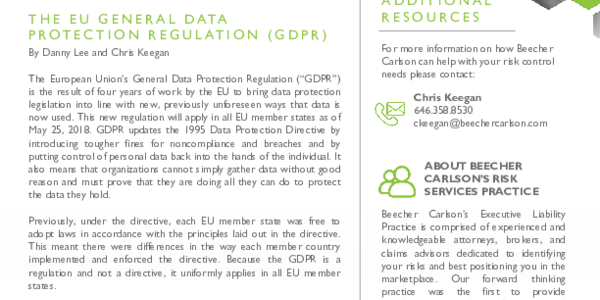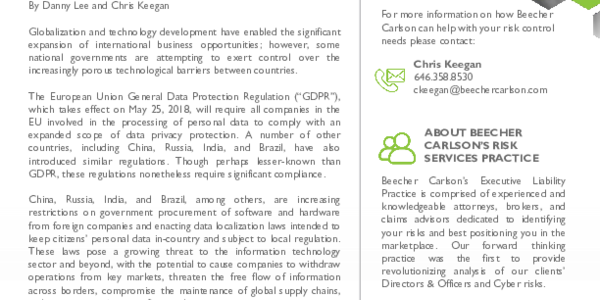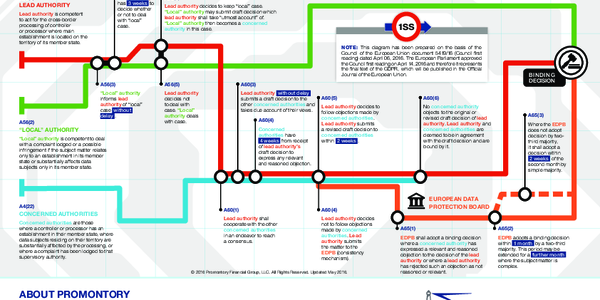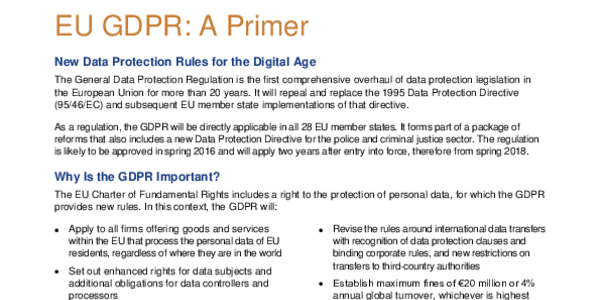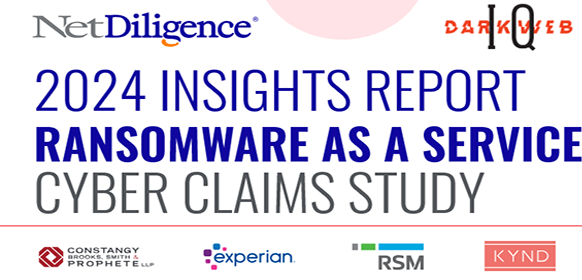EU GDPR: What To Do, When To Do It
Promontory | 05/24/2016Do Now: Start the Change Process
Become familiar with the GDPR and raise awareness of its significance by:
- Identifying elements of the GDPR that are most likely to affect your organization, particularly in relation to: business strategy, infrastructure and IT planning, new market ventures, and business-model development
- Developing a vision of the changed business and preferred outcomes for the organization in the context of the GDPR
- Communicating key messages about the GDPR with senior internal stakeholders
By Spring 2016: Initiate the Program
Set out a GDPR change-program plan by:
- Obtaining a mandate from decision-makers to establish the change program
- Establishing the activities needed to achieve the required change, and the resources required
- Defining success criteria for the program and activities to be undertaken
- Formulating a program approach and governance structure
- Recognizing the interdependencies between this change and other initiatives underway or planned
- Understanding the need to manage the change program while maintaining business as usual
- Establishing a stakeholder-management plan and engaging key people in the business about the changes required
Identify strategic and critical questions for immediate consideration, such as:
- Location of the organization's main establishment
- Appointment of a data protection officer
- Risk appetite in the context of higher maximum fines
- Potential impact of the U.K exiting the European Union after a referendum
Identify GDPR personal-data processing topics that are critical to your business model, for instance:
- Lawfulness of processing, in particular the use of consent or legitimate interests
- Processing of children's data
- Processing of special categories of data, or data related to criminal offenses and convictions
- Use of automated decision-making, including profiling
- Organization as a data controller and/or processor
- Conditions for transfers of personal data to third countries
- Data processing for specific situations, such as for journalistic, scientific, or statistical purposes
To read more, please log in

This site is operated by NetDiligence®. Links found within this site may open a new browser window and take you outside the Sompo International's Cyber Risk Portal to another website, the contents of which are maintained by third parties over whom NetDiligence and Sompo International have no control. We provide links to these external sites for your convenience and awareness. We accept no responsibility for the content of linked sites. Upon request of the content source, we will remove links.
© NetDiligence®, A Company of Network Standard Corporation
